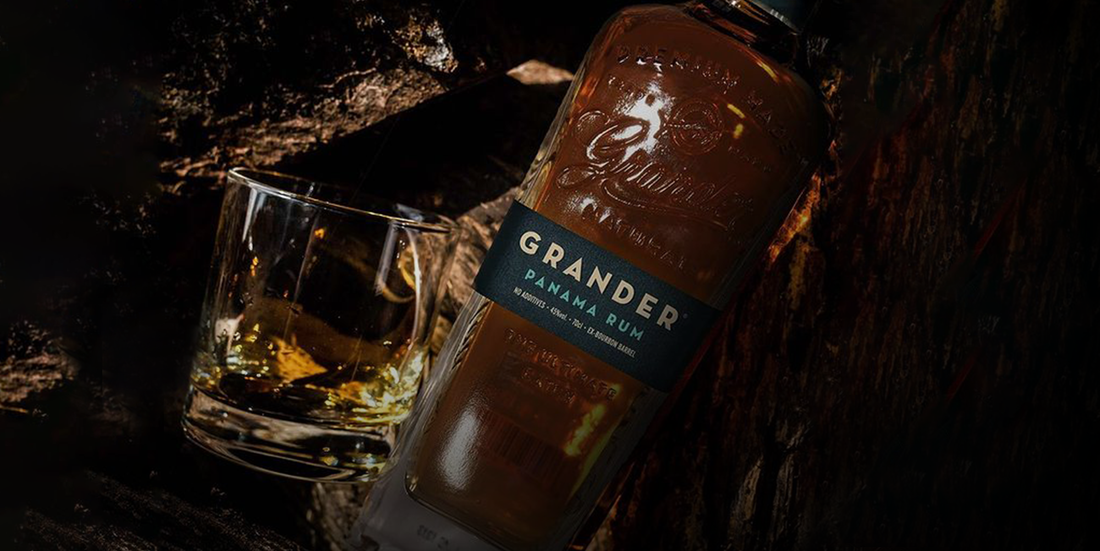Written By: Richard Nicholson, New Zealand Rum Society
What makes Grander Rum unique?
Grander Rum is a premium rum brand that is fermented, distilled, and aged in Panama at the Los Cabras Distillery, located in Herrera - Panama's smallest province that is affectionately known as “the land where no one is a stranger.” The people of Herrera are exceedingly kind and helpful to each other and to visitors.
Los Cabras Distillery uses molasses from locally grown sugar cane, to which a proprietary yeast strain is added for fermentation. This is what makes Grander one of the few rums that can proudly state that it is entirely made in its region – from start to finish. This is an important consideration for those wanting geographical-based rums (i.e. terroir).

Many other rum producers use imported molasses for example, or have their rum aged in another country. Not necessarily a bad thing, but it is different (think of Grander rums as you might a premium wine from a recognised region, that uses specific localised grapes, that are then fermented and the wine aged). The other thing we love about Grander is they are authentic in their practices, from fermentation through to maturation.
Check out their fermentation process straight from their website here!
Most of the newly distilled rum (sometimes called new make rum) is at 72% abv and typically goes into ex-Bourbon barrels at that strength. There is a 10-12% first year evaporation of alcohol, and then around 3-4% each subsequent year, which is common in humid climates. This means that by the time the rum is bottled it may have lost 25% or more alcohol, resulting in a lower abv.
A number of Grander rums receive a secondary ageing, or what is called, ‘finishing’ in another type of cask, such as sherry or whisky/whiskey.

Let's talk details...
Grander rums also have no additives. That means no added sugar, no colouring agent or anything else that might disguise or change the rum. What you get in the bottle is authentic to their rum making process.
And the name? It comes from the Grander Blue Marlin, a magnificent deep-sea fish that can grow up 12 feet long and weigh 1,245 pounds (just under 565 kilo)!
The key information you need to pay attention to:
- Locally grown sugarcane
- 24-72 hour fermentation, depending on which rum marque (light to complex flavour)
- Four independent, different sized columns that produce both light and heavy distillates (marques)
- A 10-12% (first year) and 3-4% (subsequent years) evaporation loss of alcohol during barrel ageing
- No additives of any kind
- Named after one of the most powerful and beautiful fish in the ocean
This superb rum has been matured in ex-bourbon American White Oak barrels for a minimum of eight years.
Lovely notes of molasses and banana come through, along with light hits of brown sugar and spices of clove and allspice. It’s like Christmas! There is a slight ‘Kentucky Bourbon hit’ as well, which enhances rather than detracts from the rum.
Bottled at 45% abv it has just the right amount of weight to be approachable as a great sipping rum, for those moving on from the 37.5-40% range of rums. But this rum is also excellent for classic cocktails such as a rum negroni.
It’s no surprise that this rum won Gold Medal at the 2016 San Francisco World Spirits Competition, and picked up 92 Points, 2016 Ultimate Spirits Challenge.
About the region...
Panamanian rums are generally light in body, and can taste as if they are ‘smooth’ due to addition of sugar. Typically, they have anything from semi-dry to sweet notes of mainly dried fruits like raisin, apricot, fig or dates, along with sweeter notes of caramel, toffee, vanilla, and some spicier or dryer notes of dark chocolate, coffee and caramelised fruit. Most Panamanian rums are bottled at around 40% abv.
There are some very good examples of these ‘lighter’ rums, and a few come from distilleries with a very long tradition in sugar and rum making. Some are as a result of Cubans immigrating to Panama post the 1959 Cuban revolution and bringing their rum making skills and practices with them.
Independent bottlers are now taking Panama seriously. As a result we are seeing higher abv examples that might be fully aged in Panama or partly aged in Europe.
Grander Rums can be seen as a departure from the typical Panamanian rum style because they are a lot more complex in flavour, do not carry additives that then disguise or alter the distillation and are typically higher in abv.




